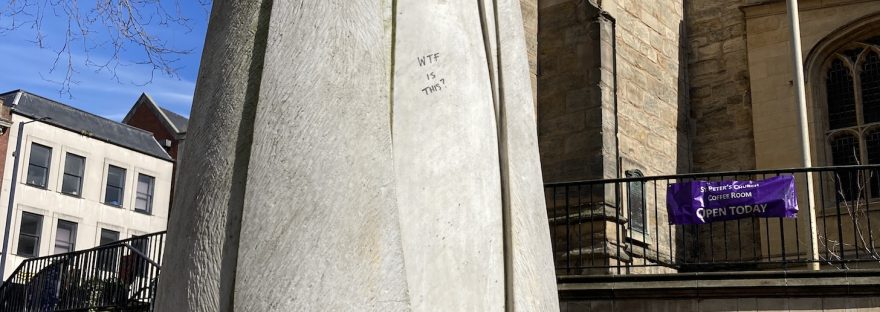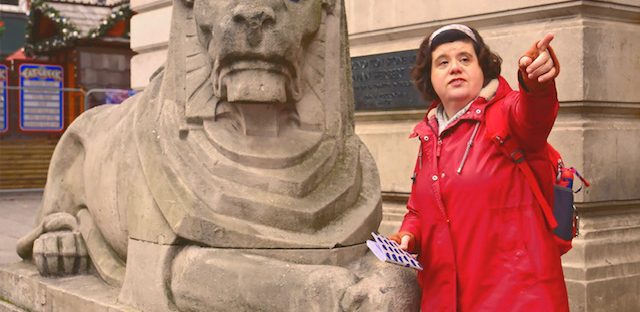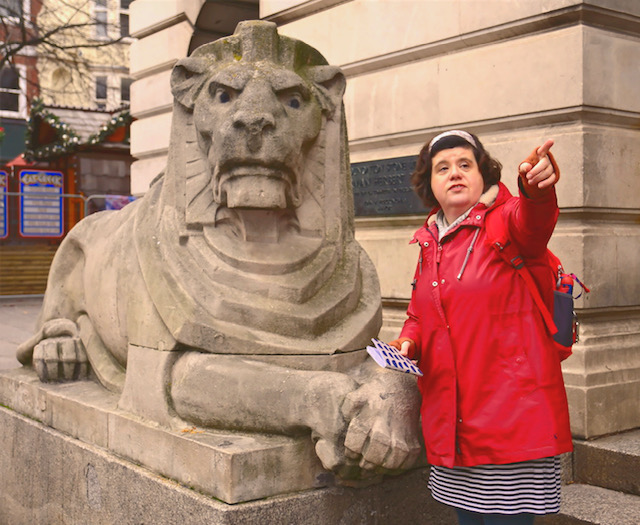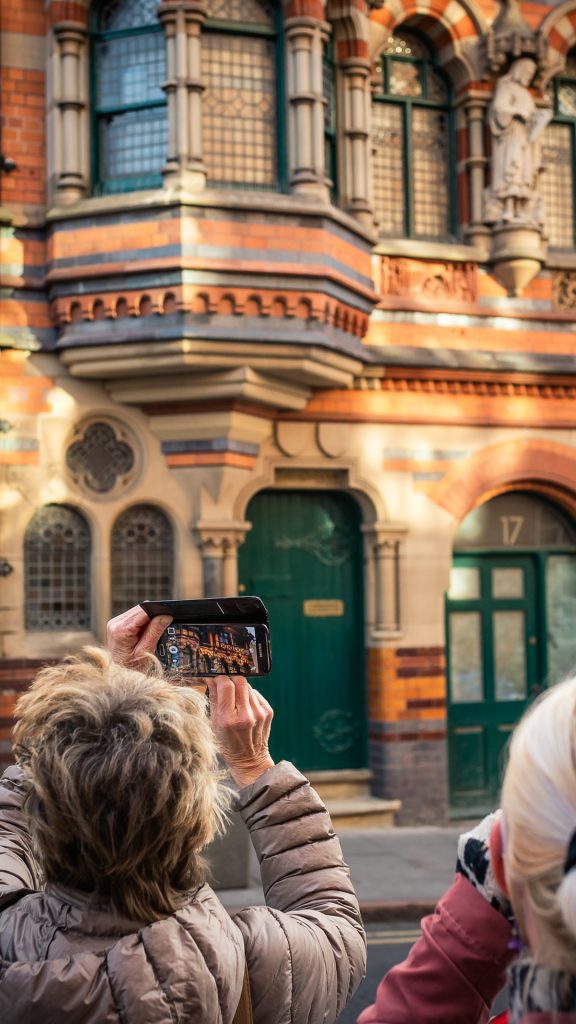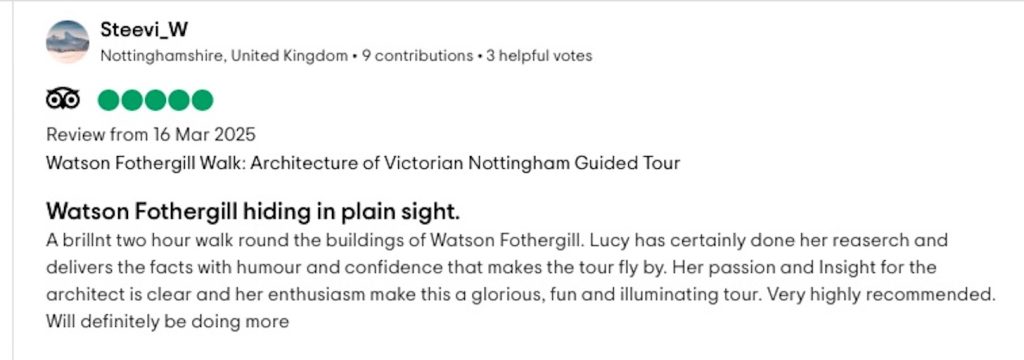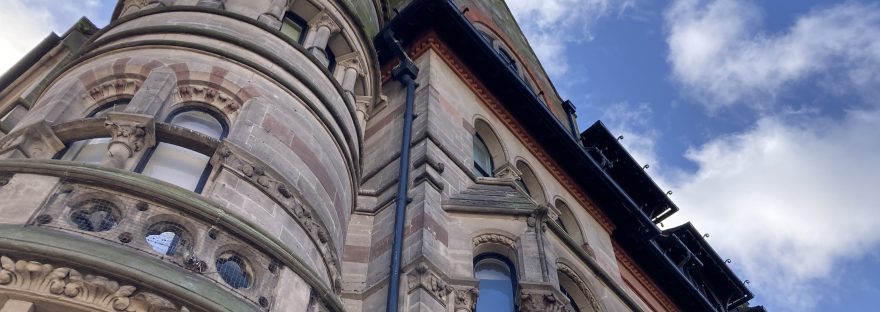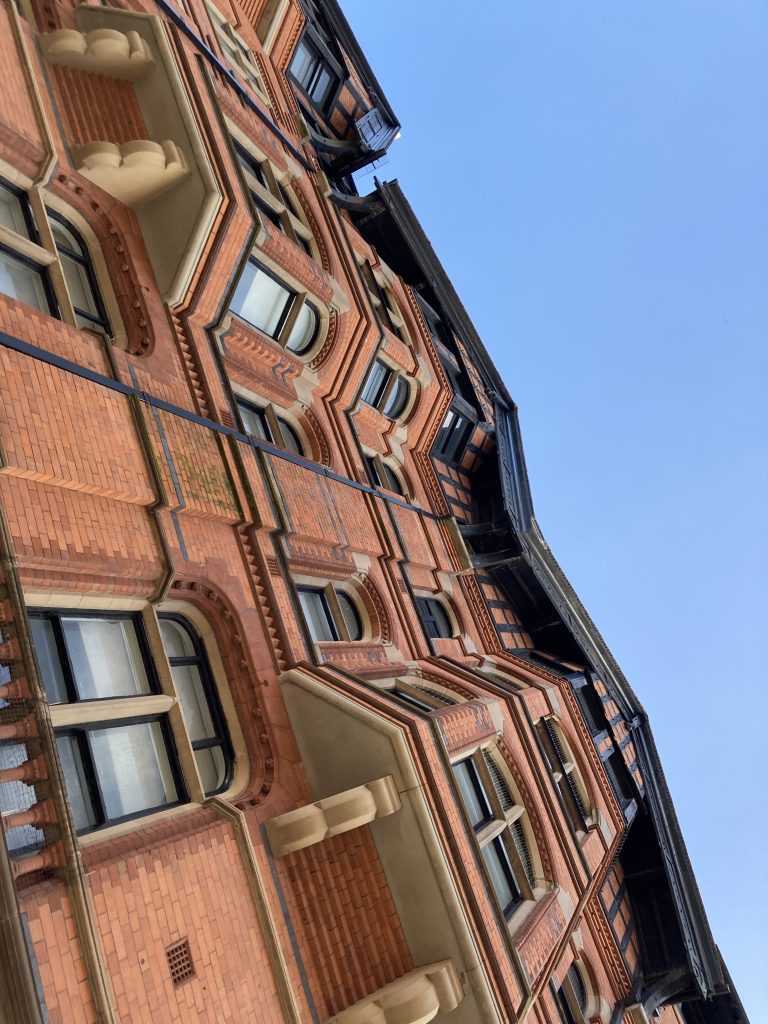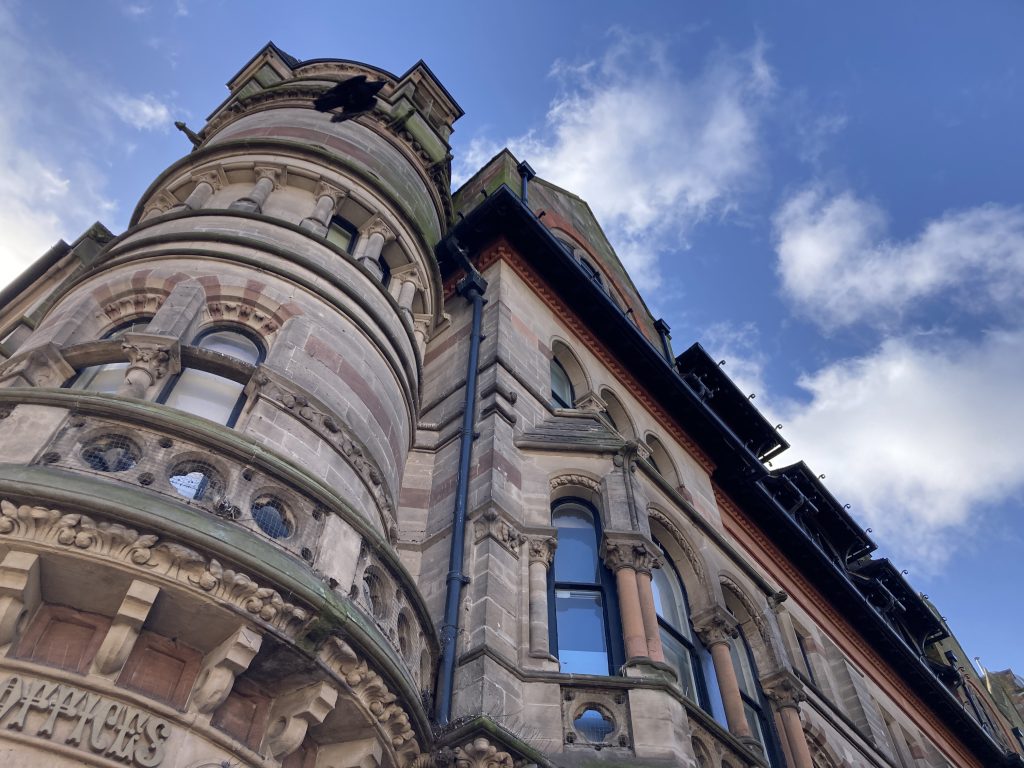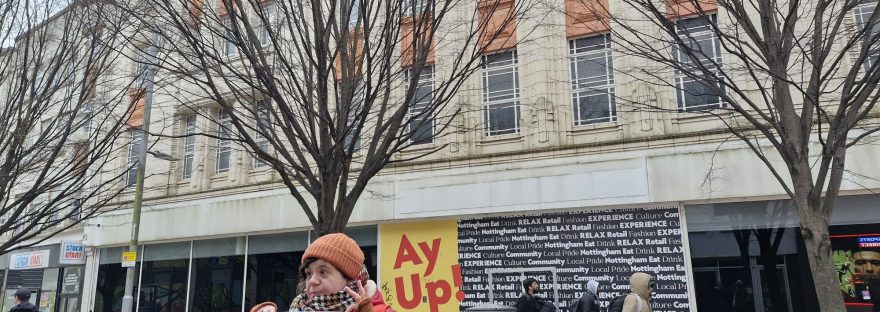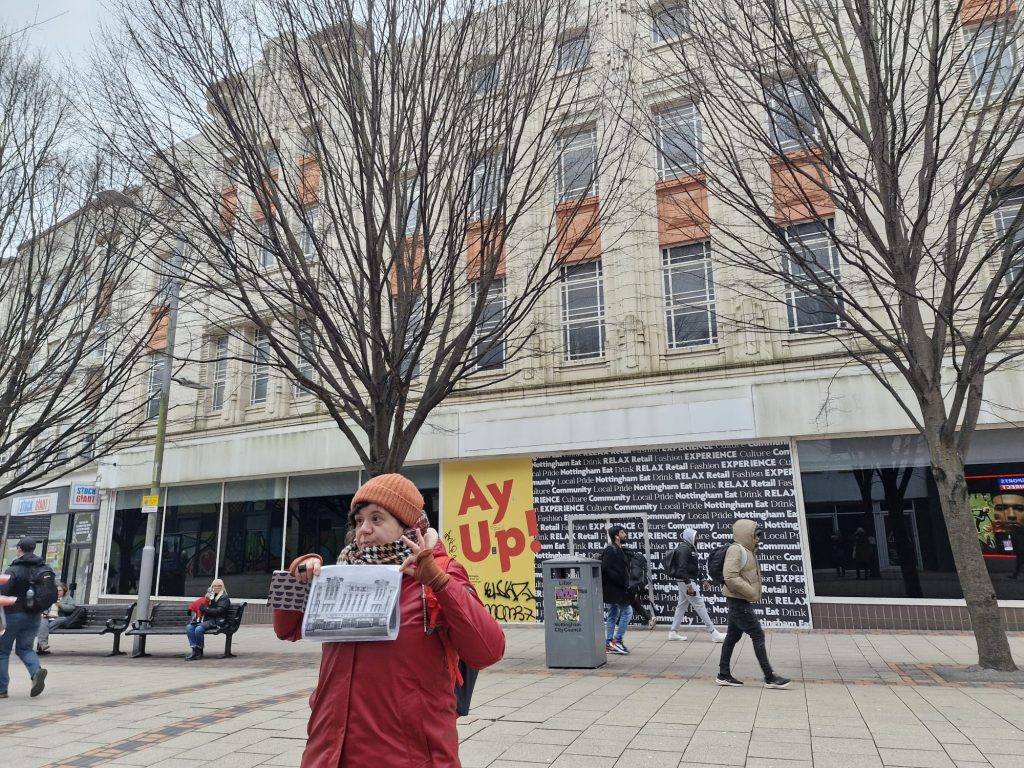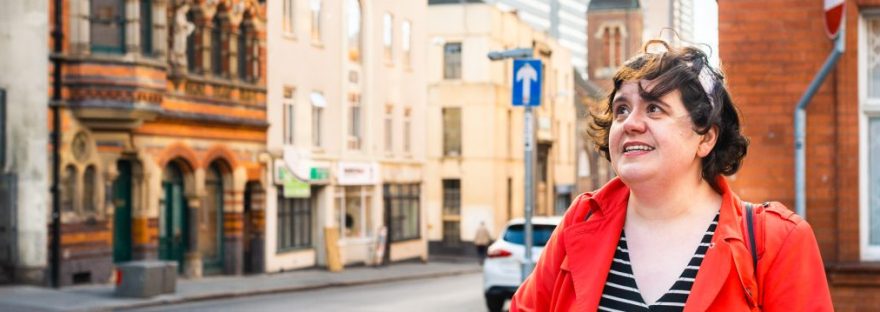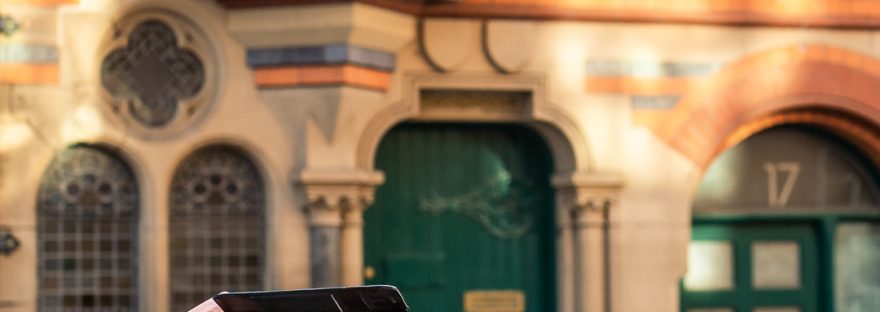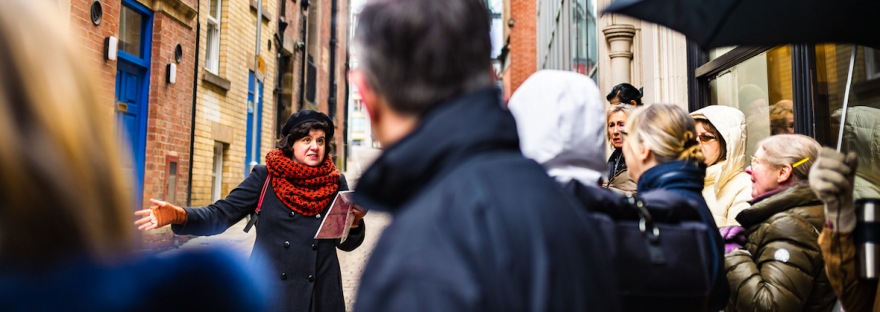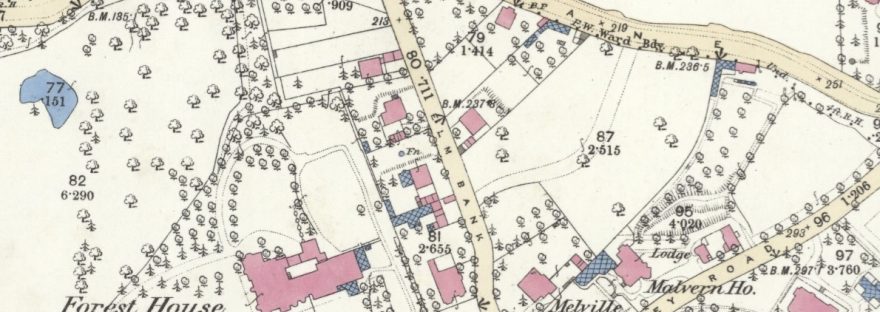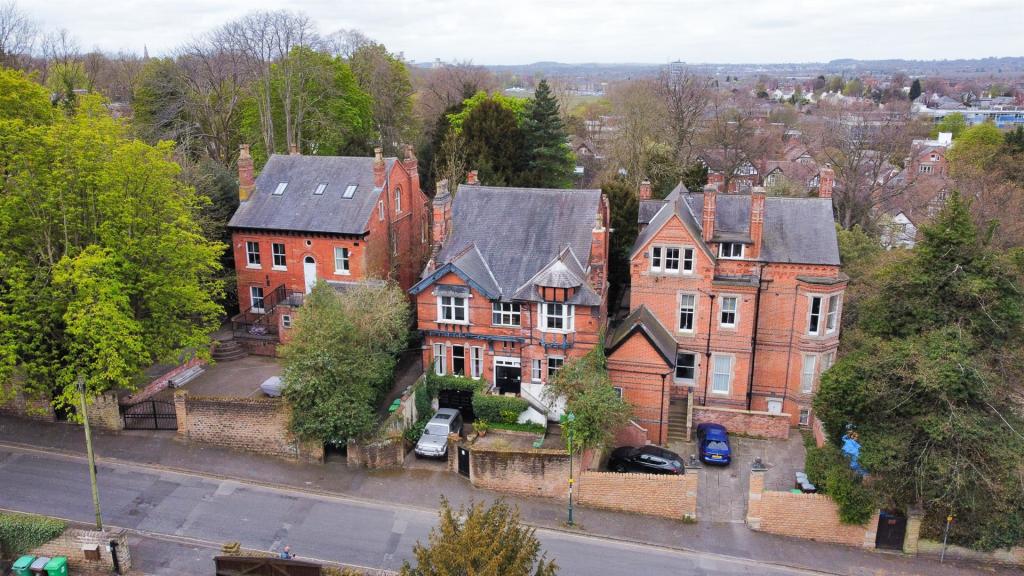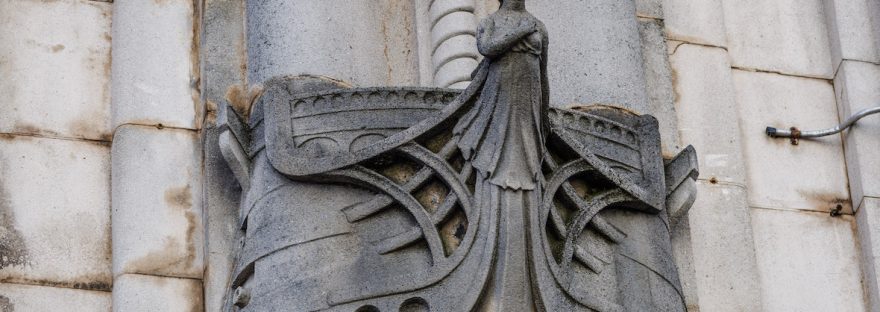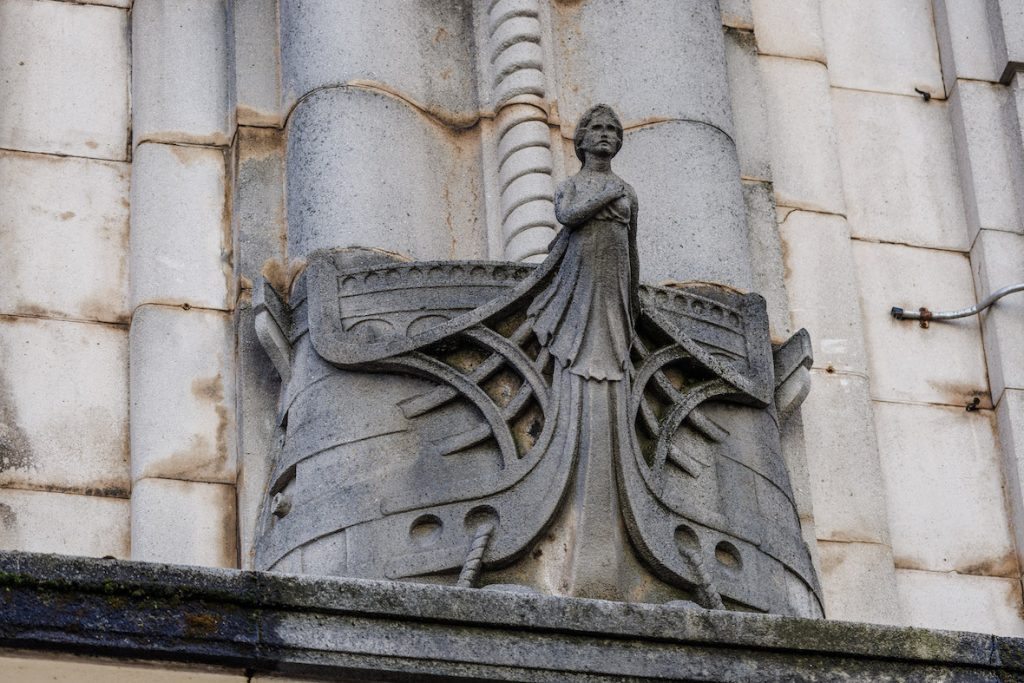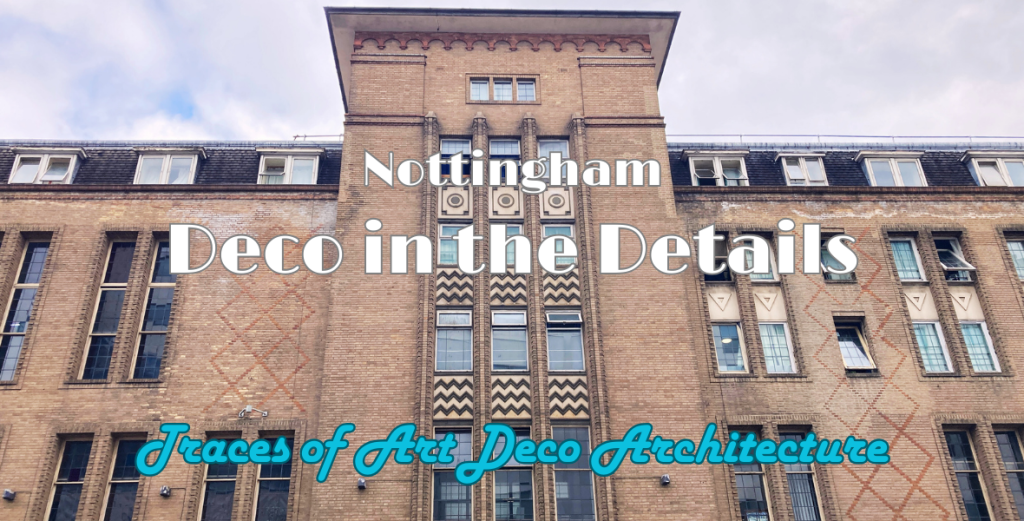I’ve been trying to create a tour that people could do without me being physically present. I put a lot into presenting my tours and it takes a lot out of me…
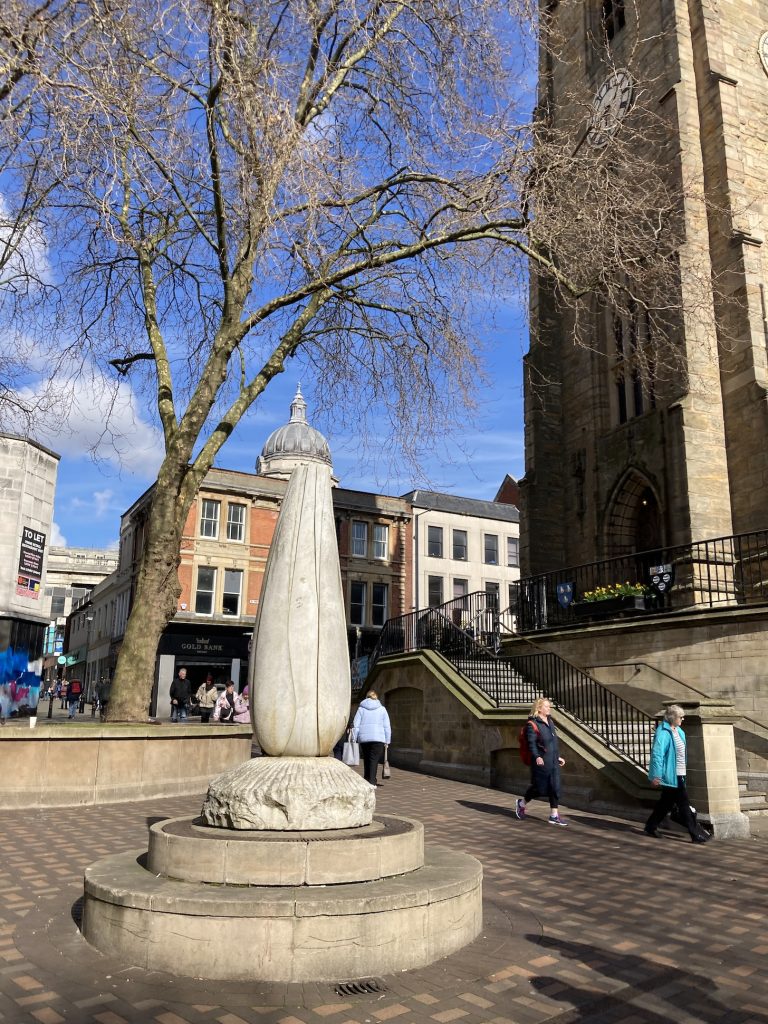
I’ve tested a few options including audio tour apps (hit and miss quality-wise), printed tours (where’s my reading glasses?) and dragging guidebooks with me onto the street (haphazard and increasingly heavy to lug around – the updated Nottinghamshire Pevsner guide weighs almost 1kg).
One of my ideas for an audio tour was for an in-depth look at some of Nottingham’s public artworks and commemorative plaques. Now come on, don’t yawn…
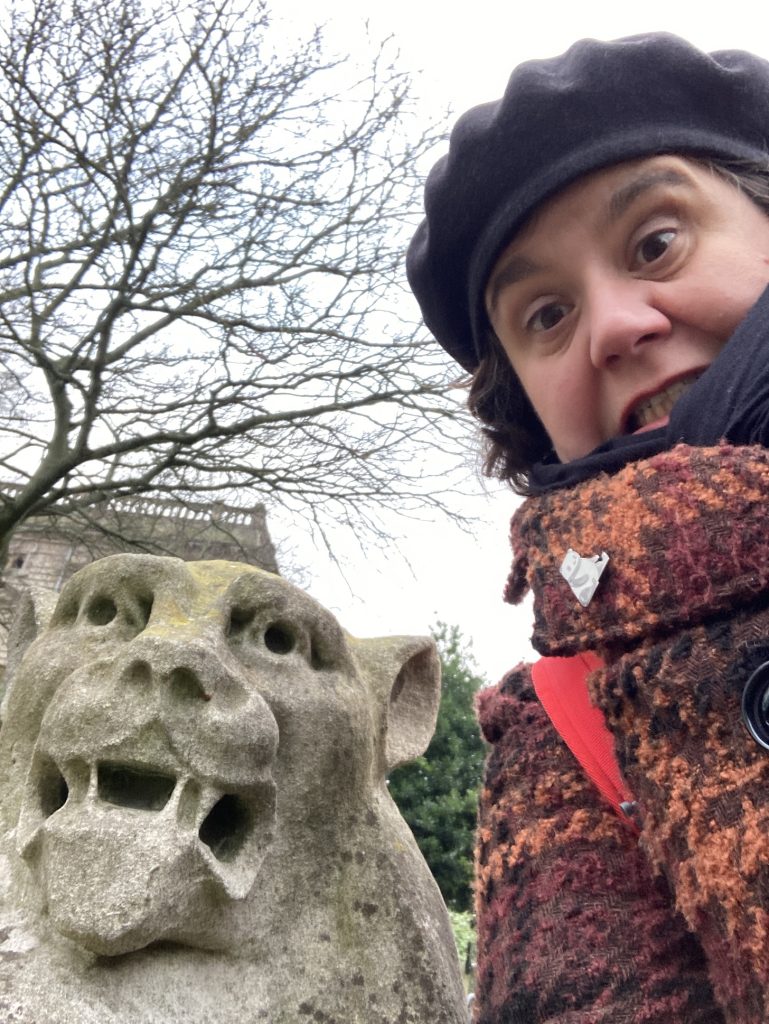
So while the sun was out I popped down to the centre of town to walk a route I had in mind, I wanted to include the new Standing In This Place sculpture in this survey of statues, so I headed down towards the Broadmarsh.
On the way, at St Peter’s Square (outside M&S) there is a sculptural work, placed in the 1980s by the well-meaning City Council, back when it had money to spend on the Public Realm. I snapped a photo and as I went by something caught my eye. There was something written in felt tip pen on the marble.
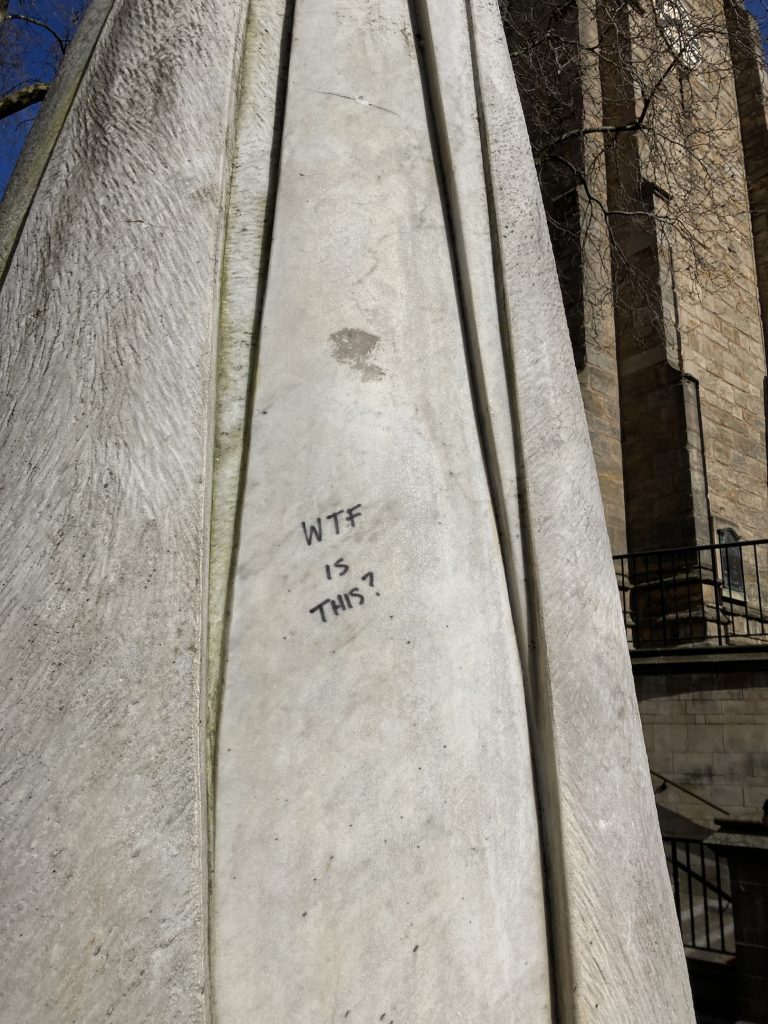
Now, I’m always on the lookout for stuff to put on the Watson Fothergill Walk Instagram, so a little later I launched this photo of Leaf Stem with brief information about the artwork, I was a bit peeved but not massively so, it’s rather neglected and hardly anyone notices it these days. I didn’t think much more about it.
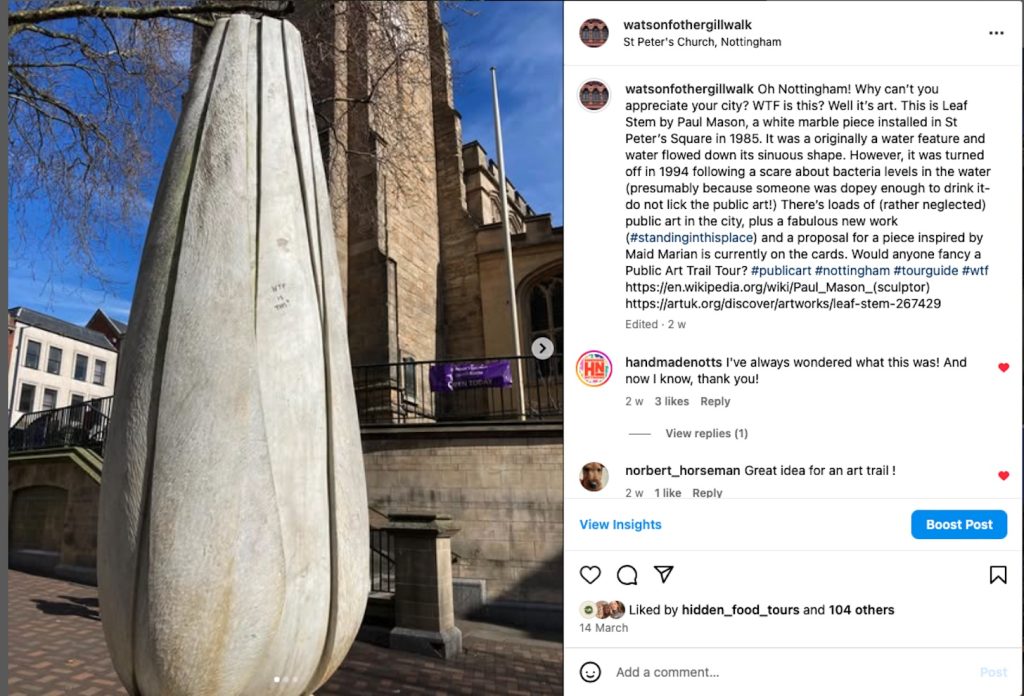
It auto-posted to Facebook and there were a few comments – the usual mild outrage that I’d suggested “LOCAL PEOPLE” might have committed vandalism, a few tales about how people thought it looked like a certain anatomical shape and the names they used to call it when they arranged to meet their friends by it, that sort of thing.
What I hadn’t really considered was that the algorithms love a bit of rage. The post started to get a bit more traction than my usual photos of buildings with names and dates. However, the next morning I awoke to a text from a friend – Saw this Notts Post headline and thought “I know her!”
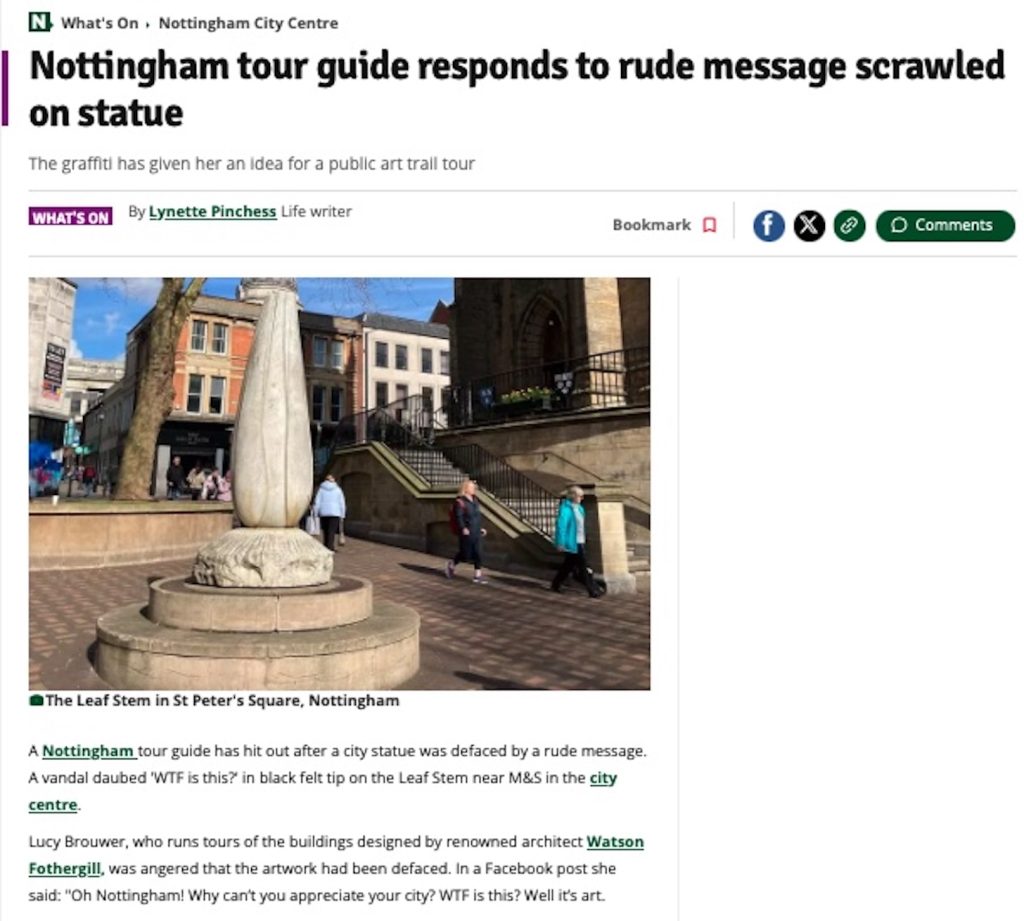
It even made the print edition! Modern journalism, eh?
A little late notoriety for Paul Mason’s Leaf Stem – here’s a blog telling the story of the work in more depth.
So I suppose I should put something together, possibly with all the slightly rude names that this sculpture has collected over the years…
Nottingham has some great sculptures – Robin Hood, Brian Clough, Rachel Carter’s fantastic new Standing In This Place, not to mention the Left and Right Lions. They all have stories to tell. Would you like a self-guided public art trail? Do let me know…
